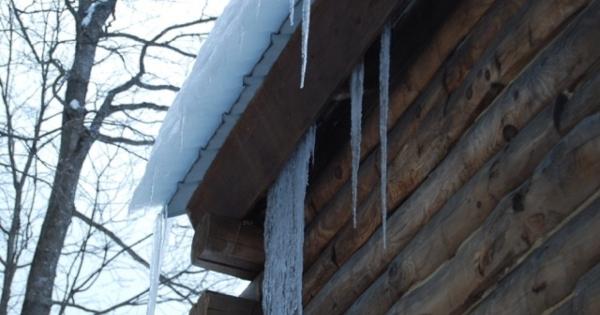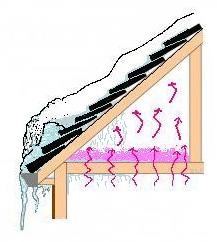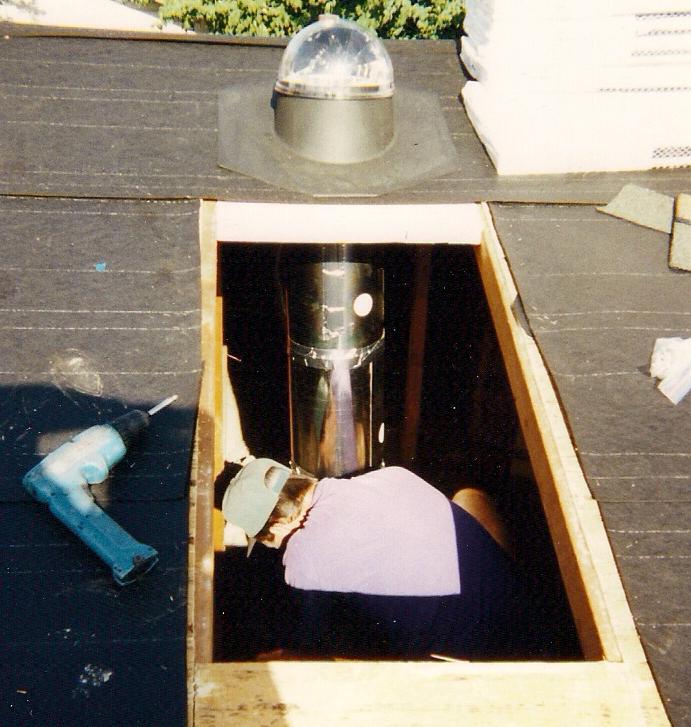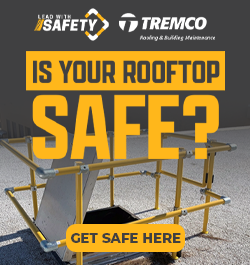Causes and Cures for Icicles and Ice Dams

By Bob McCrickard, repurposed by RoofersCoffeeShop®.
Understand how icicles and ice dams form and what you can do to avoid them this winter.
Editor's note: While Bob may no longer be with us, he continues to share his roofing knowledge with homeowners and contractors alike. Enjoy one of Bob's original articles below.
Icicles and ice dams are a real problem for many homeowners, like Sue. She had a brand-new roof installed and now has a couple of leaks and icicles she is dealing with, on top of the extreme snowfall.
I noticed the un-melted snow on Sue's garage. No one heats their garage, so the snow does not melt. Part of Sue's new roof is partially exposed above the living area of the house. This can be caused by heat loss from the living space rising into the attic and melting the snow on the roof.
The effect of this water, when it gets near the overhangs and rain gutters and the temperatures are still freezing, is the formation of ice dams. These ice dams literally cause a back up of water, just like a small lake at the edge of the roof. This water can easily submerge the roofing shingles and intrude into the home if a product like GRACE ICE AND WATER SHIELD® from GCP Applied Technologies is not used as underlayment near the bottom of the eaves and upwards past the outside walls. These little lakes that get dammed up will overflow with water. As the water pours over the edge of the roof, the water freezes and makes beautiful but dangerous icicles.
Sue explained to me that the roofing contractor told her,” I would never have icicles or ice dams again. And all of my house is covered with both, except the unheated garage. I’m being told it is because I don’t have enough insulation in my attic. I’m confused because I only have attic space in front of my house where I have no leaking!" Now, the upper rear story of Sue's house has twisted gutters that are being affected by the ice dams and icicles.
 Another reason for the snow to melt is lack of ventilation. As you can see, there is a small gable end vent on the left side and most likely one on the opposite side. If there is no other exhaust venting in this attic and an equal amount of intake ventilation, the heated air just sits there and warms up the attic, melting the snow on the roof, instead of exiting the attic. I have even seen poorly vented dryer vents, that are terminated into the attic and not exiting out the roof. These can also heat up an area in the attic and cause the snow to melt. A simple thing like this can go unseen unless an attic inspection is made.
Another reason for the snow to melt is lack of ventilation. As you can see, there is a small gable end vent on the left side and most likely one on the opposite side. If there is no other exhaust venting in this attic and an equal amount of intake ventilation, the heated air just sits there and warms up the attic, melting the snow on the roof, instead of exiting the attic. I have even seen poorly vented dryer vents, that are terminated into the attic and not exiting out the roof. These can also heat up an area in the attic and cause the snow to melt. A simple thing like this can go unseen unless an attic inspection is made.
To cure this type of problem, start with an inspection of the attic by a licensed roofing contractor. Below are solutions to
- Check the level of insulation.
- Design a balanced attic ventilation system.
- Ensure all heat sources are properly vented out of the attic.
These cures may not always fix the problem, especially in extreme conditions – but it will help get you started.
Have a question? AskARoofer.
Find your local roofing contractor in the RoofersCoffeeShop® Contractor Directory.













Comments
Leave a Reply
Have an account? Login to leave a comment!
Sign In